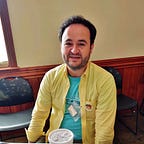Joey Bishop, ‘Deconstructing the Rat Pack,’ and other cocktails of the moment
“Deconstructing The Rat Pack: Joey, The Mob, and the Summit” biographers Richard A. Lertzman and Lon Davis exclusively strip back deadpan Jewish comic Joey Bishop’s rendezvous with Dean Martin, Jerry Lewis, Johnny Carson, the Three Stooges, John Wayne, and unexpected mistress Nora Garibotti. Son of a gun!
19 min readJan 1, 2021
